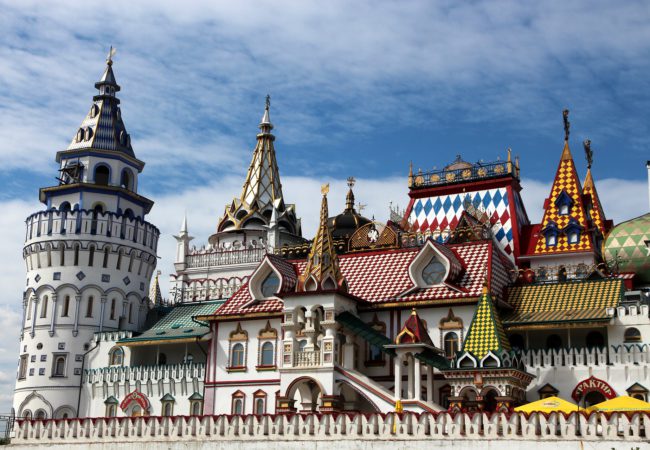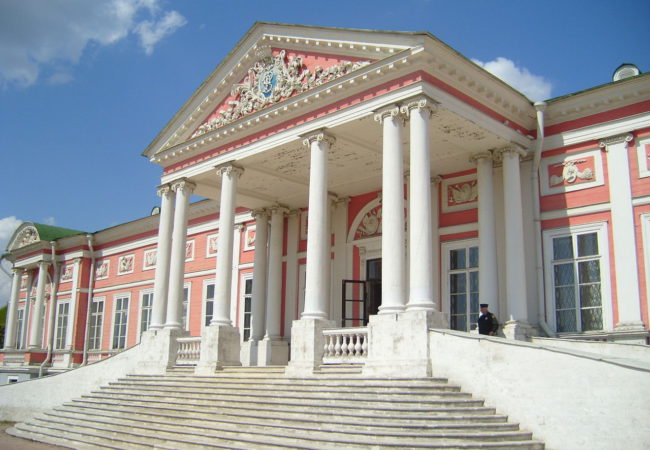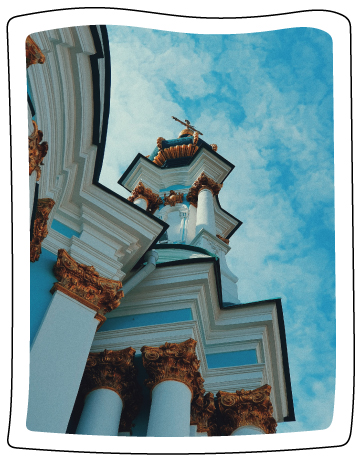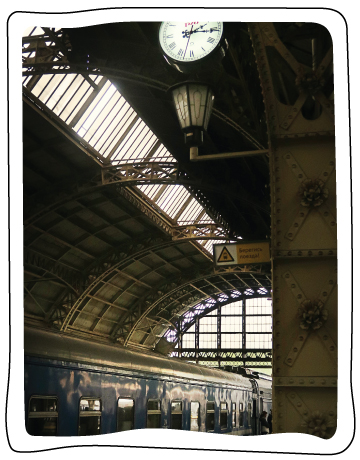Friendly disclaimer! We want to be as accurate as possible, but given these challenging times, we urge you to recheck that the venues are open when you decide to travel.
Russia is famous for its magnificent palaces and estates where, in the past, the Tzars and nobility led their lives with great luxury and privilege. Peterhof, the Catherine Palace, and the Yusupov Palace are the main tourist attractions of St. Petersburg. A lot less is known of such places in Moscow; when Peter the Great made St. Petersburg the capital of the Russian empire in the early 18th century, most of the royalty and aristocrats moved to the new capital leaving their property in Moscow to slowly fade into oblivion.
Many of these estates suffered significant damage when Napoleon’s soldiers entered Moscow; some were repurposed into hospitals and institutions while others fell into ruin. However, as recently as the last decade or two, a lot of restoration work has been undertaken, and many estates are coming back to life for you to explore!
Kolomenskoye
Now a huge park in the south of Moscow popular with Moscovites, this place served as a residence for the Russian Tzars for approximately 200 years (16–18th century). The most notable historical buildings that date back to those days are the Ascension Church (16th century, UNESCO World Heritage Site) and the Wooden Palace of Tzar Alexis (17th century). The latter was dismantled in the 18th century; what you see now is its exact replica, built in 2010.
During the Soviet era, a few wooden structures were brought to Kolomenskoye from different parts of the country to make an open-air Museum of Wooden Architecture – towers from a monastery, forts, and a church from Siberia and the north of the country. Some restoration work was carried out before the 1980 Olympic games were conducted in Moscow.
The museum is well worth a visit! There is a wide range of activities, music concerts, and numerous exhibitions in the park throughout the year. Summer festivals include Ysyakh, the Yakut New Year (June), a historical festival “Times & Epochs” (June), Sabantuy, Tatar New Year (July), and Festival of Cossack culture (August) among others.
The park is spread over an area of 39 hectares. You can explore it on foot or on a bicycle and enjoy the views of the Moscow River and its beautiful surroundings. Make sure to visit Golosov ovrag, a deep ravine that according to an urban legend is a portal to other realms where time stands still. Archeologists discovered the remains of a human settlement here that dates back to over 2000 years ago. Some believe that this is where Saint George the Victorious, the patron saint of Moscow, slew a dragon (didn’t it happen somewhere in the Middle East though?) The two stones of peculiar shape – Deviy kamen and Gus kamen – are what was left of St. George’s horse killed by the dragon. Look out for colorful ribbons tied to the trees. The stones are now worshipped by neopagans and those who wish to conceive a child; they are said to enhance feminine and masculine energies.
Unravelog tip: While taking a stroll through the alleyways of Kolomenskoye, don’t miss a 600-year-old oak tree favoured by Tzar Alexis himself. It is said to have a wish-fulfilling power, take a moment to check it for yourself!
Location: Prospekt Andropova (Andropova Avenue), 39
Nearest metro stations: Kolomenskaya and Kashirskaya
Website: https://www.mgomz.ru/kolomenskoe

Izmailovo
A former royal residency, this estate is located in the east of Moscow on an island in the middle of two water reservoirs. The thick forest around the area used to be a favourite hunting spot for Russian Tzars and their retinue.
In the 17th century, the estate implemented exemplary economic practices that proved to be very successful. The estate had factories producing glass, bricks, cast iron, linen material, mills, and fruit and vegetable gardens; they even grew grapes here. But by the 18th century, it slowly deteriorated. During the War with Napoleon, the estate was occupied by French soldiers, some buildings were destroyed and the interiors of the palace and churches were significantly damaged.
In the 19th century, Tzar Nicholas took the initiative to open a veteran home here for the participants of the 1812 war. Private funds were infused to allow the construction of new buildings. At the beginning of the 20th century, the veteran home ceased to exist, and the estate was mostly neglected during the Soviet times. Even today, some of the historical buildings are occupied by private organisations that have little to do with the museum.
Izmailovo does not see as many visitors as Kolomenskoye; the place is much quieter and as reported by some, more atmospheric. You can come here for a stroll or a boat ride, a lecture or a concert. The exhibitions give you an insight into the past of the estate and the country, as recent as in the 1960s. ‘Old Moscow flat’ allows you to take a peek into life in a kommunalka (apartment shared by a few families).
Unravelog tip: You can combine your trip to the estate with a visit to the Kremlin in Izmailovo, and to Vernisazh (Vernissage) with its flea market – they are all within walking distance from each other.
Location: Ulitsa Imeni Baumana Gorodok, 2 строение 14, Moscow, Russia, 105037
Getting there: By trolley bus 11, 12 or 34 till ‘Glavnaya alleya’
Website: http://www.mgomz.ru/izmailovo

Kuskovo
This summer residence of one of the wealthiest and most influential families of Tzar Russia, the Sheremetevs, was designed purely for entertainment. The only place in Moscow with a French styled formal garden, it was famous for grand receptions and balls that would gather thousands of people. It had a theater, an orchestra, numerous pavilions, an ‘orangerie’, a zoo, a cabinet of curiosities, a little fleet of rowing boats, and even a hunting area. The estate was damaged during the 1812 War with Napoleon and partially restored during the 19th century. After the Revolution of 1917 the estate became home for the State Museum of Ceramics, built from the nationalised collections of a Russian merchant A. Morozov and the Empress Maria Fyodorovna.
The historical buildings, the Palace, the Dutch House, the Orangerie, the Hermitage, are well maintained and their exhibitions are well worth a visit.The most exotic among them is the Grotto, whose interior is decorated with shells of 40 types of mollusks, 7 of which are extinct now. The Palace hosts regular classical music concerts.
Unravelog tip: The best sunset view is over the lake. If you want to hire a boat, make sure to bring cash – you’ll need to deposit 1000 rubles.
Location: Ulitsa Yunosti, 2, Moscow, Russia, 111402
Getting there: By bus 133, 208 till ‘Muzey Kuskovo’; metro Vykhino, bus 620, marshrutka 9M till ‘Muzey Kuskovo’; metro Novogireevo, bus т64, т75, 615, 247; or walk till ‘Ulitsa Yunosti’.
Website: http://kuskovo.ru/

Lyublino
The owner of this estate, Nikolay Durasov might not have been as famous as Count Sheremetev, but didn’t lack the wealth nor the eccentricity. He too knew how to entertain his guests; the ponds next to his house were full of sterlet, the estate’s orangeries, of pineapples. The excellent serf theater and orchestra were well-known among the high society in Moscow and St.Petersburg. In his last will, Durasov let his serf actors and musicians free, and the theatre ceased to exist in 1818. Later, the new owner started renting out houses of the estate as dachas. Fyodor Dostoyevsky spent summer in Lyublino in 1866, where he wrote parts of Crime and Punishment and The Gambler.
They say that the Durasov palace was built in the shape of the Order of St. Anna bestowed on the owner. It might not be true, but the house indeed is of peculiar shape – a cross within a circle. It is now turned into a museum that tells a story of Durasov and life in Russia in the early 19th century and houses interesting temporary exhibitions and concerts. Go for a walk or ride a bicycle in the old park, take a boat ride at the pond, or come here for ice-skating in winter and soak up the atmosphere of the days long gone.
Unravelog tip: There are no cafes or restaurants at the estate so you might want to bring some food with you to have a picnic in the park.
Location: Ulitsa Letnyaya, 1
Getting there: By metro from Volzhskaya
Website: http://www.mgomz.ru/lublino
Museum of Leo Tolstoy in Khamovniki
This estate is quite different from others – no palaces, ballrooms, or ponds full of sterlet, just a quiet little house with a beautiful garden around it. We couldn’t help but mention it here, because the owner needs no introduction to anyone who knows anything about Russia.
Count Tolstoy bought this house in 1882. When he arrived to see the house for the first time long after dark, the owner who waited for him the entire day seemed to be upset: “You won’t be able to see the house well”. Tolstoy was least perturbed and said, “But I can see the garden!” It was “almost as thick as taiga” full of apple and cherry trees, barberries, cranberries, strawberries, gooseberries, rose bushes. The family spent winters here till 1901, leaving for Yasnaya Polyana in summer.
The estate became an official museum in 1921 and most of the things in the house indeed belonged to the writer and his family. The buildings are preserved the way they were when the Tolstoys lived here. The cabinet of Leo Tolstoy is the quietest place in the house – no street noise reaches it. In the next room shoes made by the great writer are on display. There is an audio-guide, available both in English and Russian; the bonus is a recording of Leo Tolstoy’s voice.
Unravelog tip: It might not be clear but taking photos inside the house costs you an additional 350 rubles. If you are planning to take photos even on your mobile phone, purchase the permission slip together with your entrance tickets.
Location: Ulitsa Lva Tolstogo, 21
Getting there: By metro from Park Kultury
Website: https://tolstoymuseum.ru

This list of recommendations includes estates that are within Moscow and can easily be reached by metro. If you have the luxury of more time, hop onto an ‘elektrichka’ to make a day trip to places like Yasnaya Polyana, Abramtsevo, Shakhmatovo, Arkhangel’skoe, Melekhov, or Polenovo.






